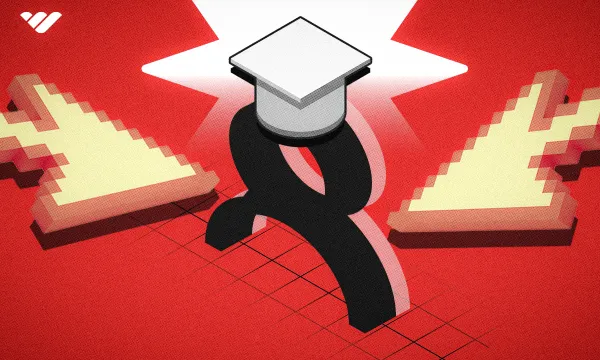Making a living isn't as easy as it should be right now, and more and more people are picking up extra jobs to make ends meet. Luckily, there's a way to make extra money without pushing yourself so hard: pick up a side business.
Side hustles can give you flexible hours, variety, and security—and they're easier to pick up now than ever before.
But with a whole world of side hustles to choose from, you're probably wondering where to start. Here are our 10 best ideas for starting a new side business, along with focused advice to help you really make it happen.
What is a Side Business, and Why is it Better Than Getting Another Job?
Side businesses, otherwise known as side hustles, are flexible money-making methods that put you in charge of how you work and how much you make. You can fit them around full-time work, school, or even parenting without having to make sacrifices to your existing schedule, making it a better idea than a second job which can leave you low on time and energy.
Side hustles come in all shapes and sizes, from selling handmade goods on Etsy to freelance programming. There are offline options too, like gardening or dog walking in your local area.
If you feel like you need extra income, you're definitely not alone. Nearly 8.4 million Americans were working multiple jobs last year, but it's so much better to be your own boss than to work under multiple bosses, right?
You can even turn a steady side business into your only job over time, especially if you come to enjoy it more than your regular work.
10 Best Side Business Ideas For Your New Hustle
One of the best things about side hustles is just how varied they can be. From things you can pick up right away to new and exciting skills to learn, this list is full of flexible, scalable side business ideas.
1. Create online courses
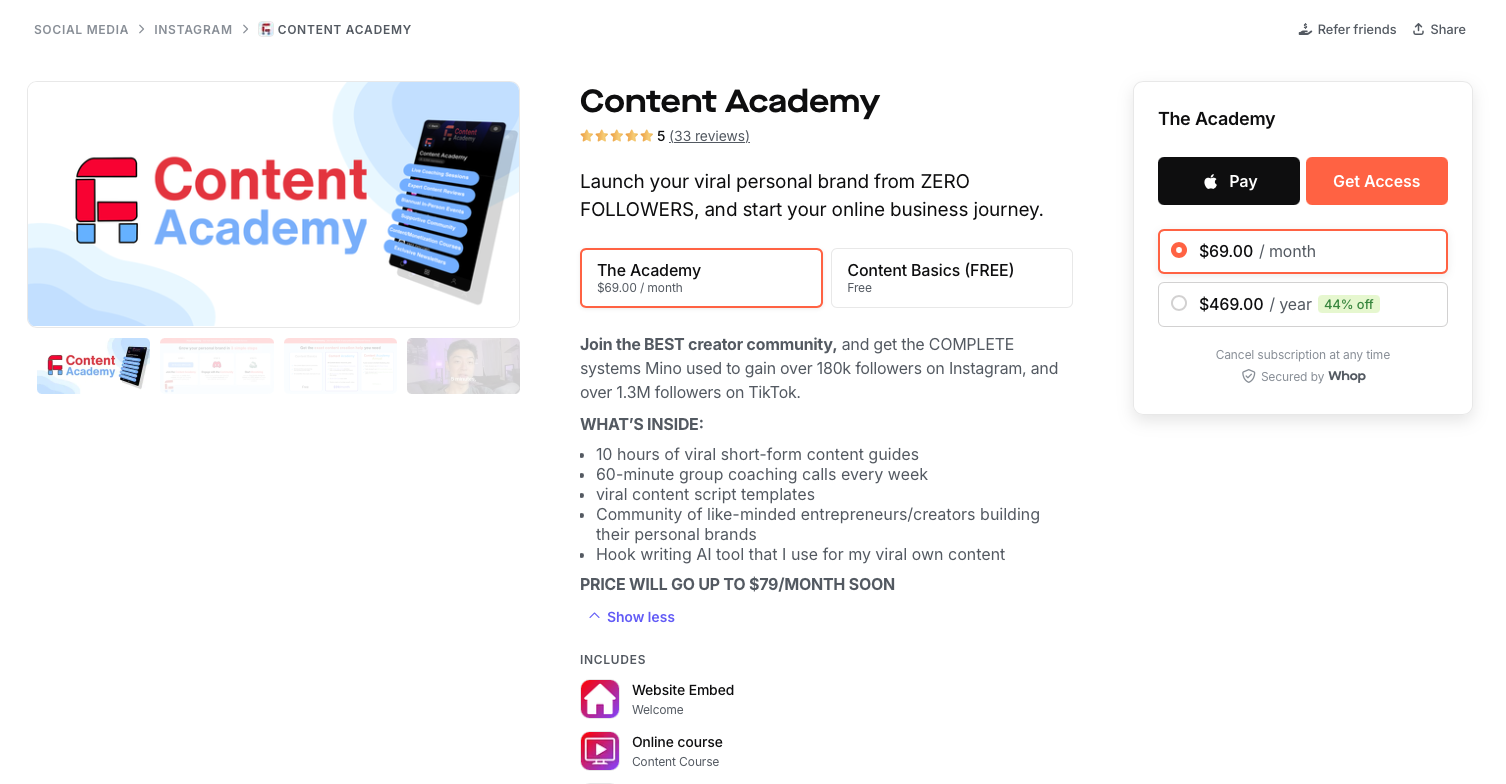
Everyone has knowledge and skills to share, and by creating an online course you can turn a subject you already know into a money maker.
It's a great way to bring in passive income because once you've done the work and created the course, it can continue to sell while you work on other things. One pro tip is to revisit your courses every so often to update them and make sure they continue to provide value.
The content of the course is entirely up to you—it could be related to your job, your hobbies, or topics you've studied in the past. Subjects like crypto advice, various sales techniques, and ecommerce tips are all super popular. Still, people also love to dive into courses about photography, social media, and other creative pursuits as well.
People can make as much as $3,500 a week or even more by selling online courses, and all you need to get started are your skills and internet access.
There are all sorts of platforms out there that can help you create your course but you won't find anything easier than Whop's built-in Course app. You create and start selling a course in just a few minutes, and add all sorts of elements like videos and quizzes.
2. Start your own consulting business
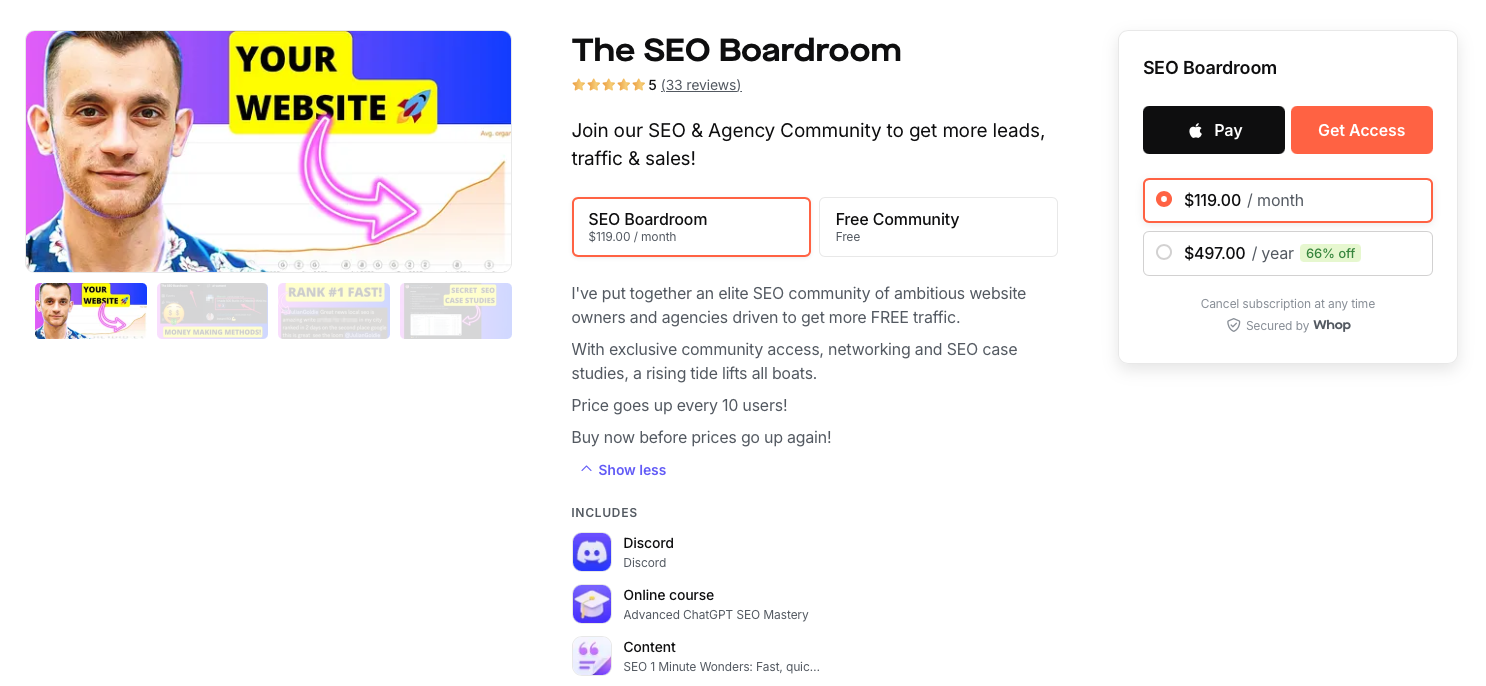
If the knowledge you have to share is marketable enough, you could even transform it into a consulting business. It's a fancy-sounding term but consulting is really quite simple—you give people advice on a subject you have a lot of proven experience with.
If you've worked in finance, tax, banking, and other complex areas, the expertise you've built up over the years is really valuable. Other topics like advertising, marketing, and SEO optimization can also work for a consulting business. Basically, anything that's useful to other people is a good foundation for becoming an independent consultant.
If your knowledge is more niche, just do some research to see if there are other businesses out there consulting on the same topic. This can help you figure out how much demand there is. Well-reviewed and knowledgeable consultants can charge as much as $300 per hour for their services.
One easy way you can get paid as a consultant is with Whop checkout links. Just send them to your client and they will be taken straight to a secure checkout page.
3. Become a graphic designer

Graphic design is certainly a creative pursuit but you don't have to be an artist to get into it. The internet is full of eye-catching visuals and someone needs to make them. From YouTube thumbnails to the featured images for articles, there's a lot of work for people who know their way around Canva (or other design programs, of course).
While there are full-time graphic designers out there, you can also make it into a side hustle by doing freelance work.
How much you earn depends on the kind of projects you take on. Logos typically go for $20 to $100; small posters and email templates can net you a few hundred dollars. Meanwhile, bigger projects like websites can rake in thousands.
4. Start your own ecommerce store

If you want a side hustle with big earning potential, an ecommerce store could be perfect for you. There are multiple ways you can approach online stores, from making your own products to dropshipping or using print-on-demand services.
Dropshipping is convenient because you don't have to keep any stock yourself. When you get an order, your dropship supplier sends the product to your customer instead. Print-on-demand services are similar—every time someone makes a purchase, the PoD company prints a product and sends it off.
You can also go the fully digital route and only sell digital products. This can include eBooks, art, digital stationery, travel guides, Notion templates, and so much more. You can start your store off small and grow it as you gain more experience and ideas.
Here are some popular platforms you can use to start your ecommerce store:
- Shopify, Wix, or BigCommerce for selling physical products
- Etsy for selling handmade products
- Redbubble for print-on-demand products
- Whop for selling digital products
5. Offer programming services
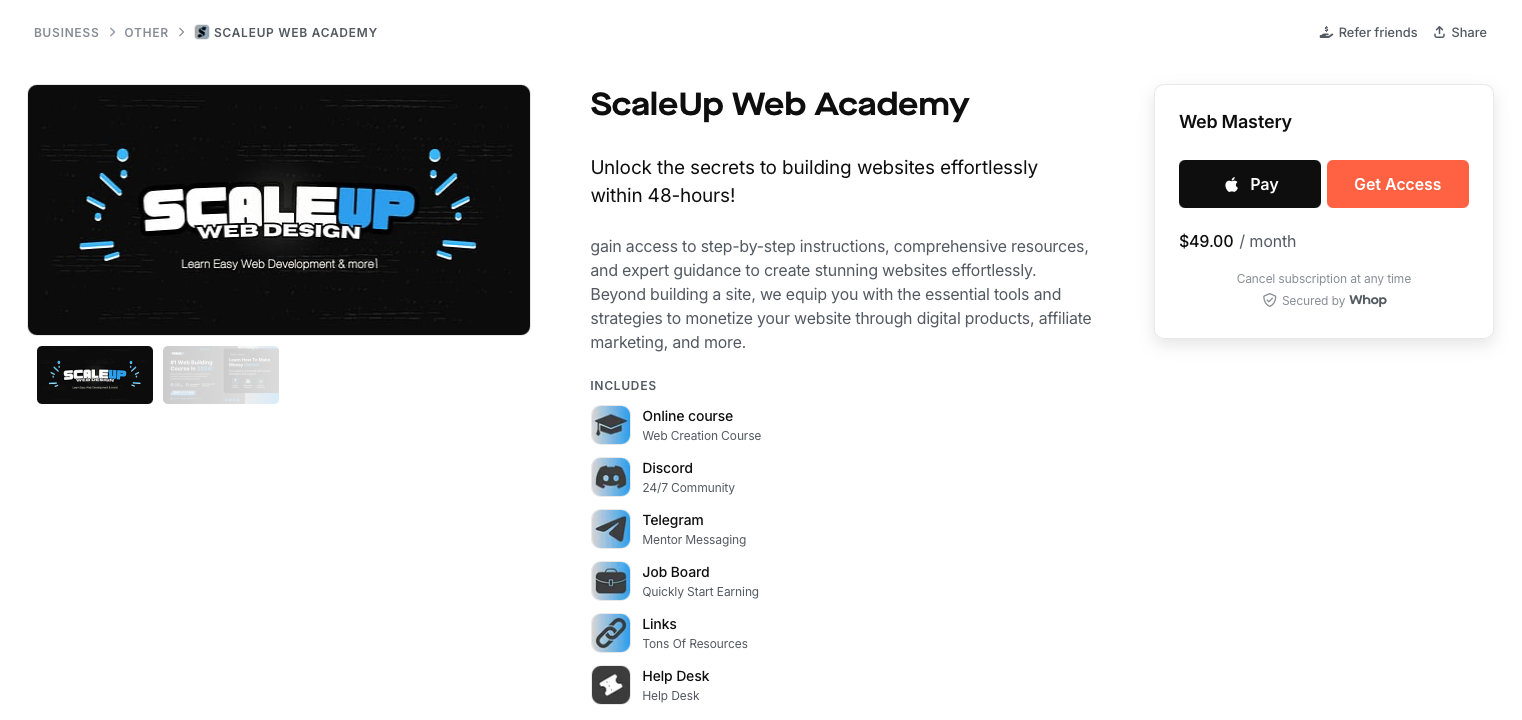
It's not a myth. There is a huge market for programming skills, and there are so many ways you can use them to make money. You can work as a freelance programmer, specializing in different areas like cybersecurity and SaaS (Software as a Service).
You can also offer services like web design and making apps. People have new ideas for apps all the time, but the people with the ideas aren't always the people with the right skills. By teaming up on projects, you can get paid or even become a co-creator.
If you're not looking to work on projects, there's also one more option: teaching. With Whop, you can create a paid learning community online where you can create courses, share resources, and chat with your students as you teach them what you know.
Freelance programmers can get paid thousands of dollars per project, but if you don't already have programming skills, learning can take a bit of time.
- 53 Online Business Ideas You Can Start
- 80 Small Business Ideas to Start
- Profitable Ecommerce Business Ideas to Start
- 50 Side Business Ideas
6. Work in social media
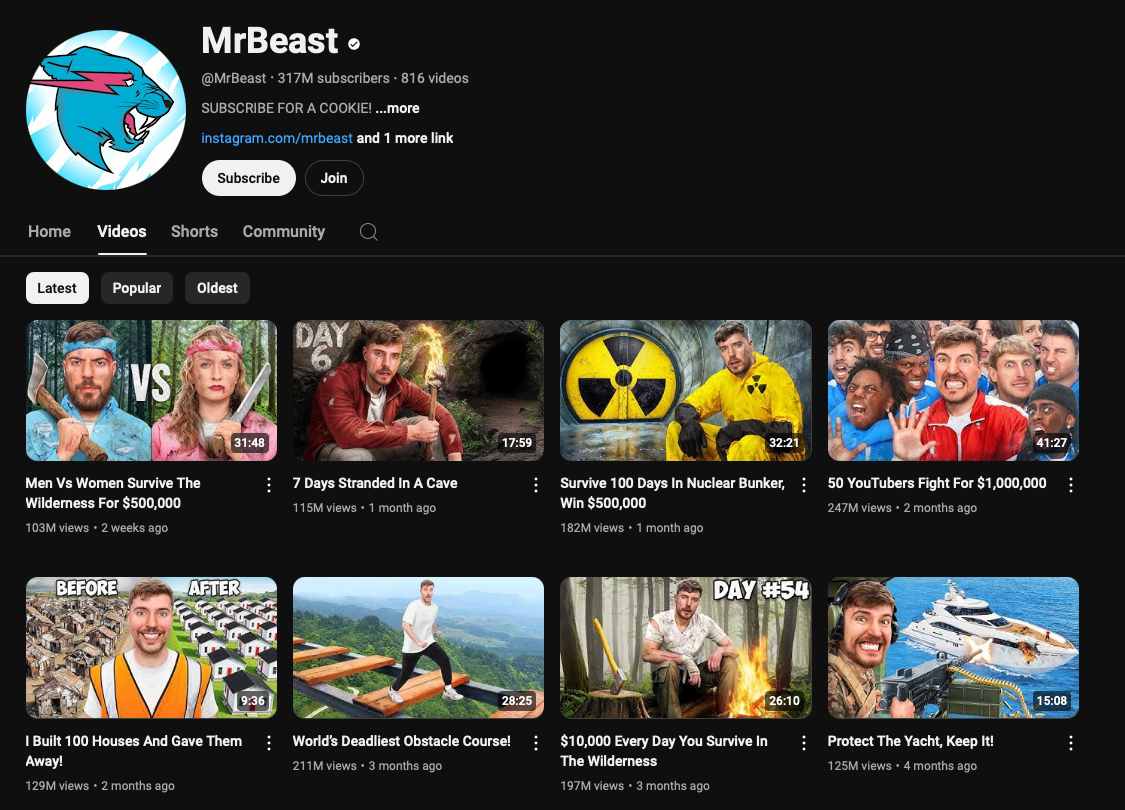
Becoming a YouTuber for a living sounds like a pipe dream, and yet, people continue to do so. You've probably spent enough time on YouTube yourself to know there's an audience for almost everything, and with Google AdSense income, you can earn as much as $100 for just 5,000 views. (Psst: You can learn more about how much YouTubers earn right here.)
There are also streaming sites like Twitch where you can focus on live streams, which are, by default, much more spontaneous and interactive. Your viewers can even send you money as you stream, so you can get instantly rewarded for providing quality content.
For TikTok, ad revenue and sponsorships are where the money is. Build a following, gauge what your community likes, and team up with companies who are willing to pay the big bucks for some affiliate marketing.
The downside to social media is it can take a long time for followers and money to start coming in, and unlike most ideas on this list, it's not guaranteed to work. But a big part of side hustles is incorporating your passions, so if you have the drive and commitment, social media can be worth the time. And, of course, the earning potential can be truly insane.
7. Write ebooks and sell them
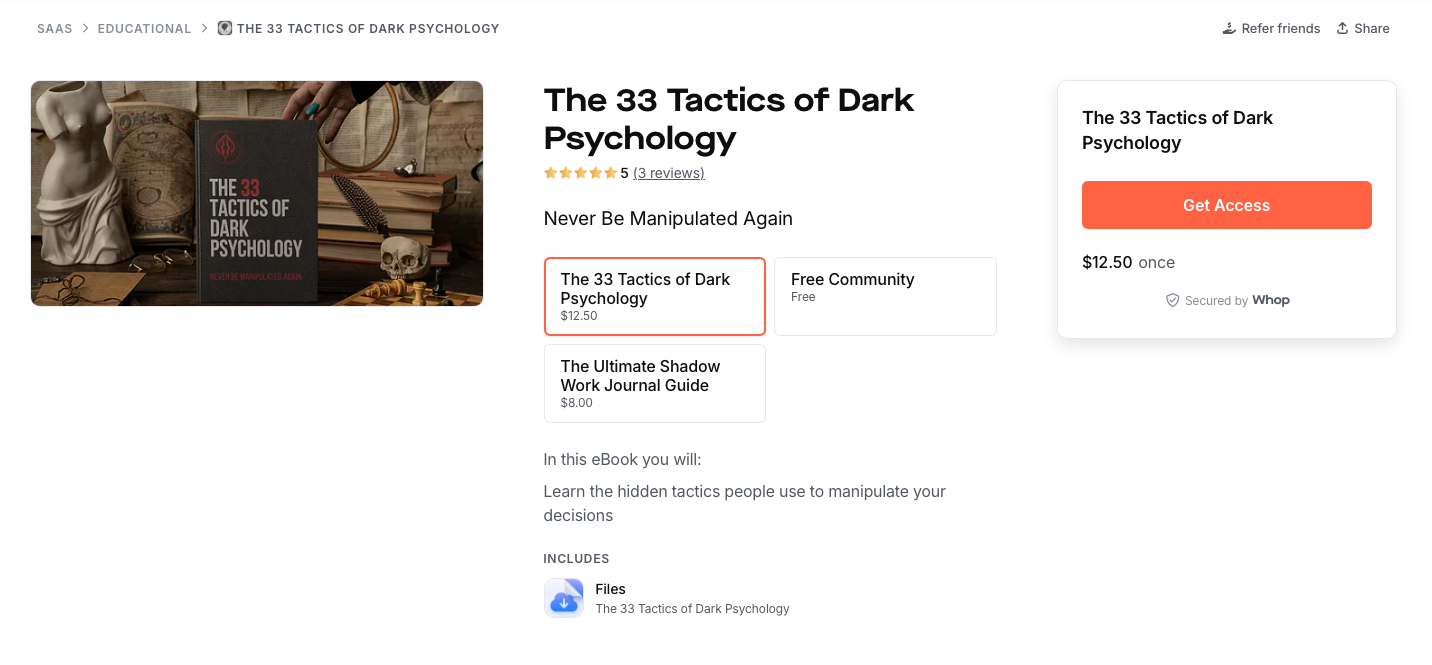
If you're a natural writer, you could make a lot of money selling ebooks. There are two main ways to do this—sell your ebooks like traditional books or sell them as done-for-you products. The first means you write a book under your name and you're the only person who sells it.
Done-for-you ebooks, on the other hand, are more like customizable templates that you sell with resell rights. The term for this is Private Label Rights (PLR) products. Whoever buys it adds their own spin and sells the ebook as their own. It can be a strange concept to get your head around at first, but it's a lucrative business idea!
Ebooks are pretty much universally loved. Revenue is expected to reach a new market peak of $1.1 billion by 2029, and all you need to join in is a knack for writing. Popular topics include social media, the stock market, mental health, marketing, and ecommerce. One ebook sale might only net you $2 to $50, but they're a great source of passive income.
With Whop, you can create a digital storefront where you can sell multiple ebooks—separately, in bundles, or however you want. You won't get charged extra for having lots of different listings, and you can set the whole thing up in just a few minutes!
8. Set up a paid community
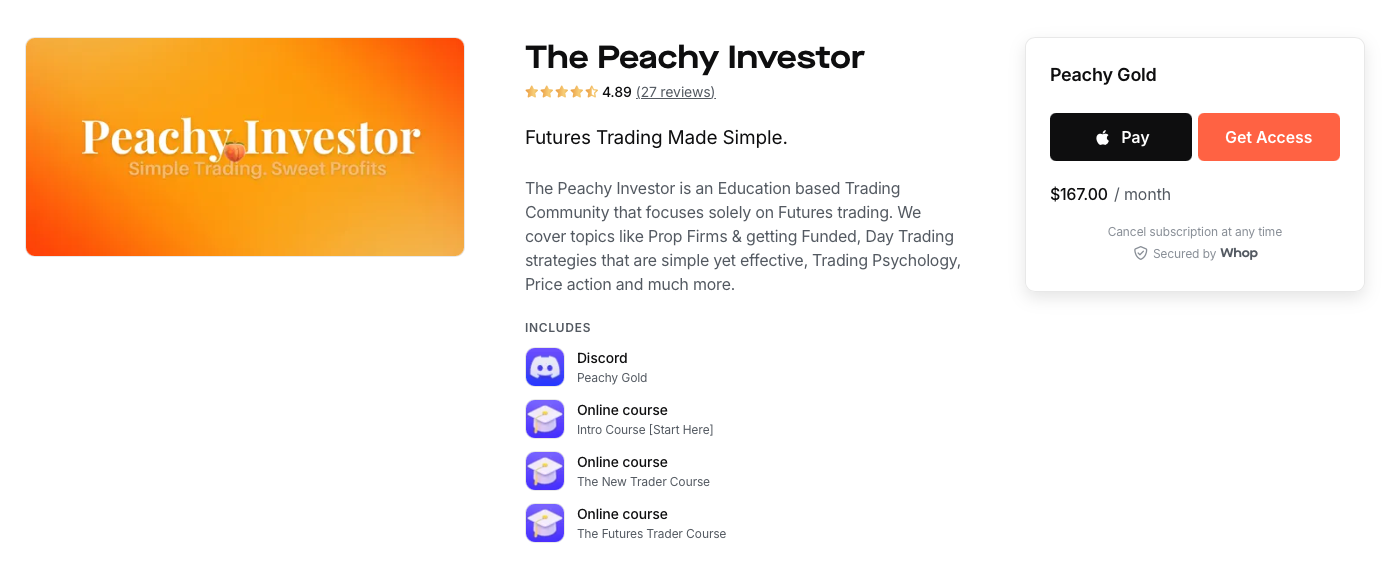
The term "paid community" might sound a little odd, but they're actually everywhere, and they're often the most beneficial type of online community—both to you and to other people. YouTubers, Twitch streamers, and even professional associations—they're all communities of people who have paid to be there.
The good news is, you can make one too and if it goes well, you can bring in as much as $2,500 a week or more (some communities on Whop make over $250k per month!). Communities don't just appear out of thin air, however. It will take time to build one and you'll need to dust off your marketing techniques to find potential members.
The theme of your community could be anything. You can share knowledge about in-demand topics like crypto and investing, or you can monetize an existing community such as your Twitch or TikTok followers.
9. Become a copywriter
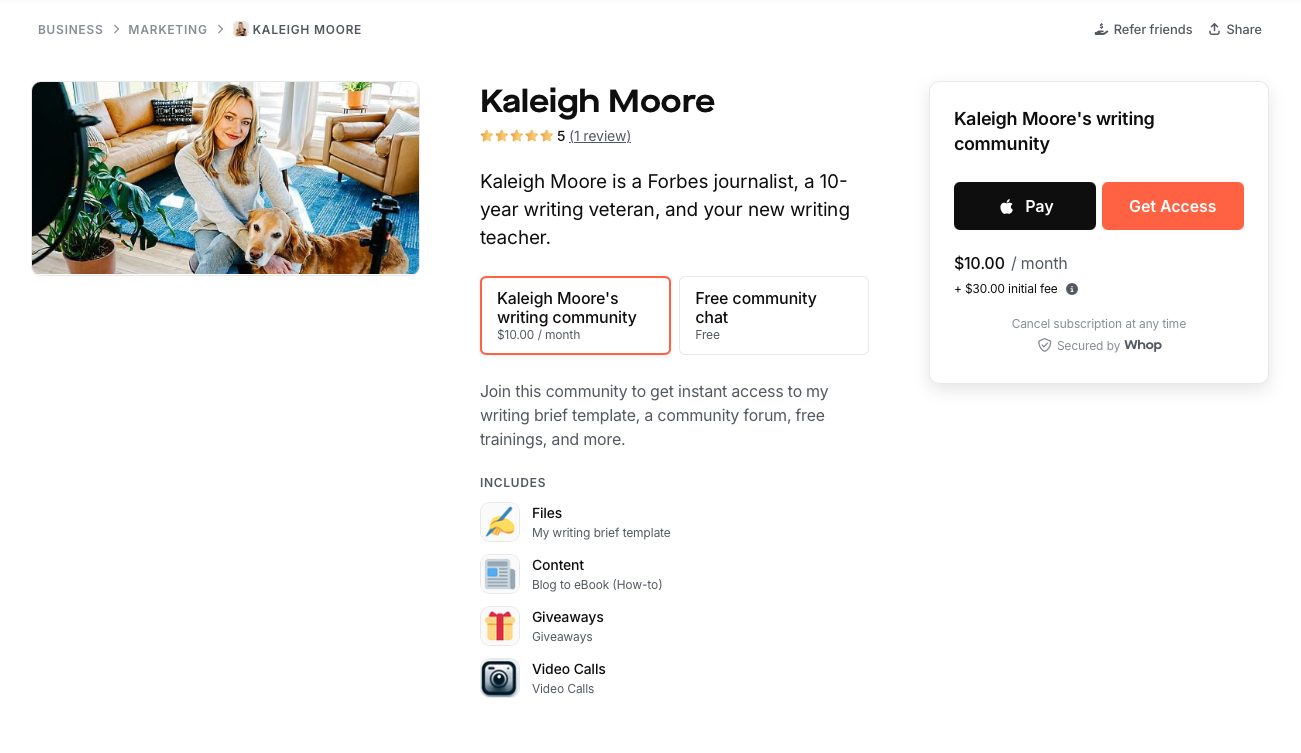
We mentioned writing ebooks earlier on the list but in truth, not everyone who is good at writing can write books. If your knowledge is more on the marketing and business side of things, there is another kind of writing you can get into, however—copywriting.
One of the best things about copywriting is how accessible it is. If you're okay with starting at the bottom, anyone can learn this skill and work their way up to well-paid jobs. Well-established freelance copywriters generally make between $30 and $100 per hour.
Rather than an extensive vocabulary or good descriptive skills, copywriting requires a concise, clear, and engaging writing style. Most clients want writers to write as if they're talking directly to the reader, and use marketing skills to convert readers and sell products.
Similar areas include technical writing, SEO, and copy editing. You can offer all of these services or just focus on a few, depending on your skillset.
Pro tip: Clients really don't like the hassle of finding new ways to pay you. Since you'd be working with multiple different clients, Whop checkout links are a great way to get paid. All you have to do is send the link over to your client and they can pay you instantly through a secure checkout page.
10. Set up a useful business in your local area
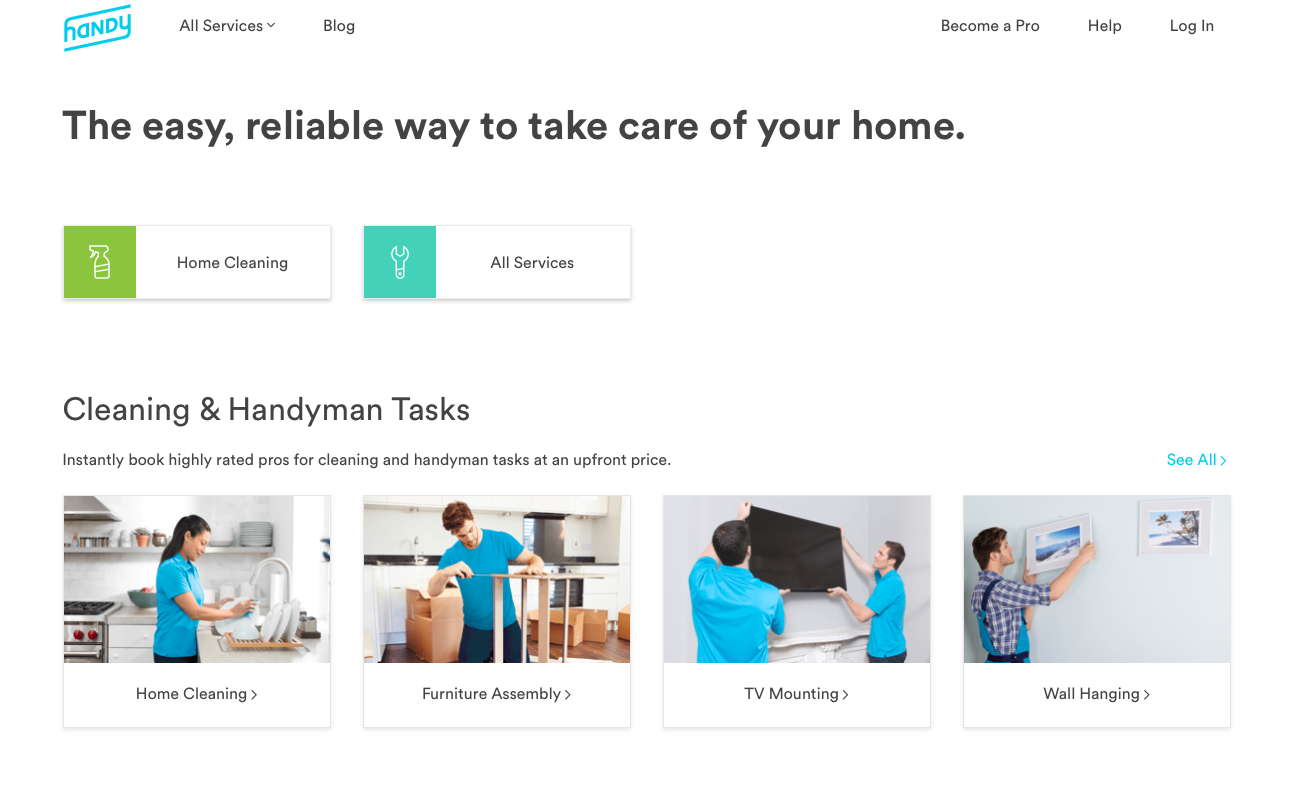
We've focused heavily on online side hustles that you can do from home, but if you prefer to get out of the house, there are options for you as well. By setting up a useful business in your local area, you can easily become the first person people think of when they need to get a job done.
Finding the right handyman, landscaper, dog walker, car washer, house cleaner, or gardener can be a real bother for some people. But once you have a few good reviews from people in your area, choosing you will be a no-brainer for other locals.
While you can spread your business through word of mouth, you can also use apps like TaskRabbit, Handy, and Thumbtack to both promote your business and receive jobs and payments. Depending on what services you offer, you could make between $500 and $1,500 per week.
What to Consider When Starting a Side Business
As convenient and accessible as side hustles can be, there are still certain things you have to think about before you jump in.
Tax considerations
If you've only worked full-time jobs until now, you'll have to learn about self-employment tax. In the United States, as soon as you earn more than $400 in self-employment income, you need to file taxes for it.
This is usually done through Form 1040 Schedule C, as part of your personal tax return, but please double- and triple-check before you file anything in your state.
Like anything tax-related, it will seem bothersome and complicated at first but once you've got the hang of it, it will just become another part of your tax routine!
Your employment contract
Unfortunately, your full-time work can affect what side hustles you can do. To find out if your employer has set any restrictions, you'll need to look at your employment contract.
The first thing to look out for is an NDA (non-disclosure agreement). If your side hustle idea involves information or intellectual property from your day job, an NDA will stop you from going through with it.
There are also non-compete and exclusivity clauses. Non-compete clauses essentially stop you from engaging in a side hustle that could compete with your employer's business or put it at a disadvantage. An exclusivity clause, however, will stop you from starting a side hustle completely because it forbids you from doing paid outside work while you're employed.
Lastly, more creative jobs like programming can have IP ownership clauses. These pesky clauses state that any intellectual property you create while employed belongs to the company. Luckily, it's often possible to have this clause removed if you request it, so set up a chat with your boss and see if you can work it out.
Time management
While side hustles are more flexible than getting a second full-time job, they do still take up time. Before you start, you need to think about how much time you can realistically put aside and what kind of side hustle you can manage within that amount of time. If you find that you really don't have that much time, a part-time job or passive income sources might be a better fit for you.
You can also consider how much of a passion project your side hustle would be. For instance, if you wanted to try Twitch streaming, the promotion and admin-related tasks might be considered work but the time you spend on camera might be more of a hobby. This can help you think differently about how your time is used and how much you can spare.
The downside of these side hustles that are more on the fun side is that they might take more time to bring in money, so weigh in the pros and cons before diving in.
Upfront investment
They say you have to spend money to make money—but that's not always ideal. Side hustles that require upfront investment add a new element of risk to the project which means you can also lose money as well as fail to make money.
Luckily, loads of the side hustle ideas we've covered don't require any investments. Online freelance work, paid communities, selling digital products—you can start all of these projects for free.
How to Start a Side Business in 9 Easy Steps
While we've provided a lot of good ideas and handy advice so far, there's one thing missing: an actionable roadmap for you to follow. Knowing exactly what you need to achieve and what order to do it plays a huge role in success!
1. Figure out what you want to do
Starting a side hustle is all about earning money while having more fun and freedom than a full-time job can give you. That's why the crucial first step is picking out something you want to do. You might be interested in monetizing a hobby, learning a new skill, or maximizing profit—whatever gets you motivated is what you should focus on.
If you're struggling to think of something, it's okay to start off simple. Using your existing skills for consulting, getting into copywriting, or starting a local gardening or cleaning business are all great ideas that will suit many people.
You've probably heard of this before, but making lists can help—I certainly do it when I'm not sure whether to start working on a new project. Write down the good stuff and the bad stuff until you land at the perfect intersection between "enjoyable" and "lucrative."
2. Do some market research
Now that you're motivated, it's time to think about marketability. It's a good idea to stay open-minded at this point because the outcomes of your research might require you to tweak your idea a bit.
Market research pretty much refers to jumping on Google and finding other people or companies that offer the goods and services you want to offer. You need to look at how many competitors there are, how well they seem to be doing, how much they charge, and even how they advertise themselves.
Here are a few market research tools you might be able to make use of:
- SimilarWeb
- Glimpse
- Answer the Public
- Statista
- Google Trends
- Think With Google
3. Check the legal side of things
Depending on where you are and what kind of side hustle you're starting, there can be various legal responsibilities to take care of. You might need to register your business with the federal or local government and you might need licenses or permits to do business.
Unfortunately, there's no one set answer for how to deal with this since what you have to do is completely dependent on your unique situation.
It's also important to set up a business bank account so you can keep your personal and business transactions separate. This will help make it easier to stay on top of accounting and filing taxes.
4. Create a business plan
Business plans are a must if your side hustle will involve investment, funding, or a partnership but it's also good practice for all situations. It helps you think through the practicalities of your idea and make sure everything adds up.
Note that for small, casual businesses, it's totally okay if you don't want to go all out with a full-on business plan like this. In my own experience, though, it really helps to write these things out.
You can cover just about every aspect of your business idea, from the overall vision to the products, marketing, and financial plans. Here's a more detailed list of the things you can cover:
- Executive summary: A short section at the start that introduces the plan to readers. Include a few sentences about your business and the goals you have for it.
- Business description: Here you want to get into the details of what your business will be and how it will work. Only certain aspects will apply to your side business but it's a good idea to look over all the elements that usually go into a business plan just to check which are relevant to you.
- Mission statement
- Revenue streams
- Legal structure
- Leadership
- Competitor analysis: Here you can summarize the results of your market research. What other companies are out there, how will you learn from them, and how will you compete with them? Think about what they offer, how they market themselves, and what their sales are like.
- Products and services: Provide an overview of your products and services, what value you hope they'll deliver to customers, and how they compare to competitors' offerings.
- Marketing strategies: Go over the plans you have for social media marketing, paid ads, and general strategies for growth. You can also add some information about your target audience and what you think their experience with your business will be like. Creating a target persona helps so much at this stage.
- Financial planning: This might not seem all that relevant if you're trying to start up a side business without investment, but you may occasionally find something worth putting money into, and even a few expenditures here and there can add up.
Writing down potential costs and comparing them to a budget will help you understand the potential overall cost of what you're doing. It'll also keep you nice and organized for tax purposes, and who doesn't love that?
5. Prepare your products and services
Here's another step you don't want to rush. As excited as you might be to start making money, you need to make sure that what you're offering reaches a certain standard of quality first. It doesn't need to be utterly perfect because you will grow and develop as the project progresses, but it does need to provide value right from the get-go.
The specifics of what you need to do will depend on the kind of side hustle you've chosen. Maybe you've got ebooks to write or online courses to make. You might be making handmade products or setting up a freelance portfolio website. You know the drill: the sky's the limit.
If you're selling products, physical or digital, you'll also need to write up descriptions, take screenshots or photos, and choose product names. Everything needs to look appealing on your storefront and provide potential customers with all the information they need to click that "buy" button. Knowing some basic SEO is going to help you massively here.
6. Pick a platform
Because online shopping is such a huge industry now, there are all sorts of ecommerce platforms to choose from. Each has its own strengths and drawbacks and offers focused features for different kinds of stores.
For instance, platforms like Etsy specialize in handmade products, while Shopify offers scalability for growing stores and dropshippers, and Whop is perfect for selling digital products.
Prices and fee structures differ too, so it's important to look into the right type for you. If you're looking for a quick and inexpensive start, platforms like Whop work well because it's free to sign up and you won't pay a dime until you start making money.
7. Set up social media
Even for small businesses, marketing and communication is essential for growth and retention. Luckily, you can use social media to both reach out to new customers and interact with your current ones.
It's a great tool both because it's inexpensive and because it's what current consumers expect from you as a business owner. Even if the ecommerce platform you choose has its own customer service tools, many online shoppers will instinctively go to a brand's social media if they want to get in touch with you.
It's also one of the most popular methods for discovering new products and learning more about what a brand has to offer. Your marketing strategy can develop over time, but just remember to post a whole lot, make everything look as nice as possible, and have fun with trends to draw attention.
8. Start advertising
Alongside social media, you can also try out other forms of advertising. You can keep the expense low with email marketing and SEO, and eventually look into paid advertisements when you're ready.
While advertising is important, there are a lot of worthwhile things you can do that don't require a big investment. If you're starting small and trying to avoid upfront costs, spending too much on advertising from the get-go might not have the best results.
9. Review and reassess
One thing you shouldn't expect when starting a side hustle is to get everything right the first time. It's okay to get things wrong and it's definitely okay to make things better, so reviewing and reassessing your progress and strategies is a must!
Keep an eye on the analytics your platform provides you so you can see how much you're selling and how much you're making. It will show you which services or products your customers like best, and depending on what you use, you could find more useful information like which products receive the most complaints.
When you find something that's not going as well as you want, try to come up with a way to improve it. There's no need to panic or rush the process, just give some thought to how it could be better and take the steps to make it happen.
Start a Profitable Side Business With Whop
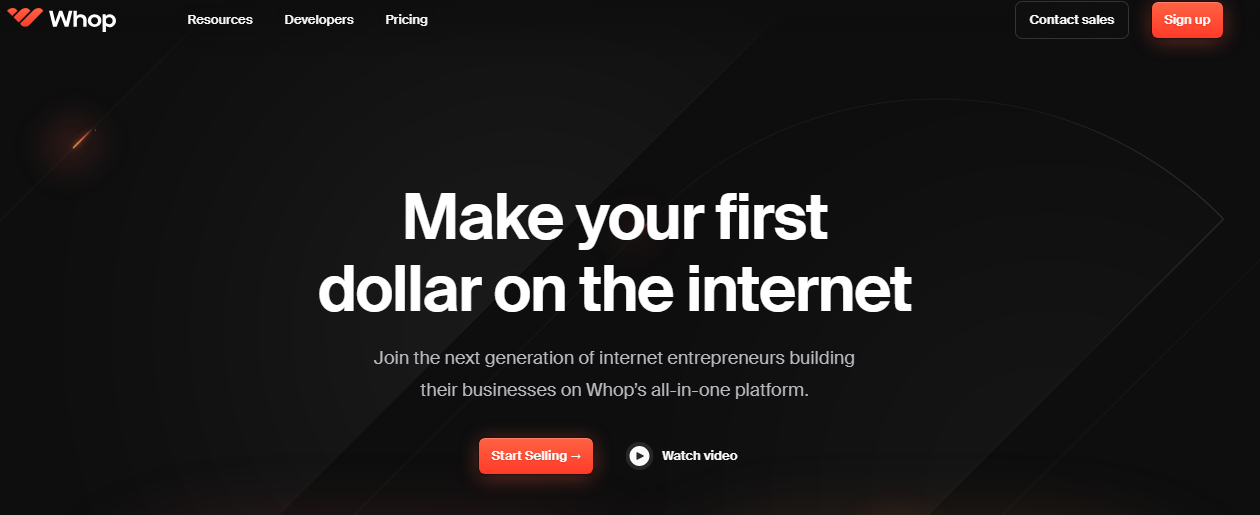
With Whop, you can start making money in just a few minutes and without any upfront costs.
The advantage of a side hustle isn't to just make money—you could do that by just getting another part-time job. The real advantage is to make money on your own terms, in a way that fits seamlessly into your life.
That's why it's good to properly consider your options because not every side hustle will suit you and your lifestyle. Some might need you to leave the house all the time or accept hours that aren't quite what you want, and others might not bring in enough work.
Luckily, you can avoid these pitfalls by starting a side business with Whop.
Whop will give you the freedom to work when you want, get paid when you want, and grow your side business with confidence. It only takes a few minutes to set up your own whop, and once you have your own hub you can start earning right away.
Here are just some of the things you can do to make money with Whop:
- Ebooks
- Online courses
- Access to a paid community
- SaaS
- Digital products
- Meal plans
- Access to live events and webinars
- One-on-one tutoring or coaching
- Consulting services
- Fitness advice
- PLR products
Whether you want to earn a little bit or a whole lot, you can make your whop completely your own. You set the pace—we're just here to help you.
Make money your own way by starting a side hustle that you're completely in control of.
FAQs
1. How to start a side business?
If you want to start a side business, there are many different ways to go about it. The most important thing you need to do, however, is check the legal side of things to make sure you're ready to deal with taxes and regulations. It's boring, but it's essential!
The other main point is to stay within your limits. Don't invest more money or time into your project than you can handle, especially because you don't need to spend a lot to succeed. There are lots of low-investment side hustles you can start that can bring in results without over-straining yourself.
2. What's the best side business to start?
The best side business to start in terms of profit is probably an ecommerce business. While you can start small, if you hit a good niche and find the work interesting, it has the potential to grow into your main source of income.
Selling physical products can be a little scary for newcomers, however, so digital products are a great place to start. With Whop, you can create your own custom hub where you can sell a whole range of digital products and services with no upfront costs.
3. What side businesses can I start from home?
If you're looking for a side hustle you can start and work on from home, there are actually a lot of options. You can sell your skills such as writing, graphic design, programming, consulting, and much more by using platforms like Whop. You can also start an ecommerce store.
4. Can I start a side business while employed?
It's definitely possible to start a side business while employed, but you will need to make sure your employer is okay with it first. (That doesn't mean asking your boss, but rather looking at your employment contract.)
There could be clauses in there that stop you from sharing certain information, competing in the same sector, or even doing paid work at all. Some jobs also have clauses that transfer the ownership of IP you create over to your employer.

![40 Easy Ways to Make Money Online [2024]](/blog/content/images/size/w600/2023/11/20-ways-to-make-money-online--1-.webp)


